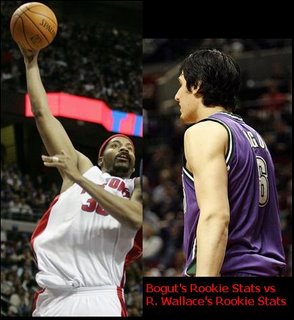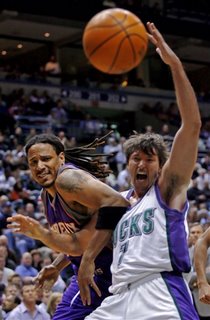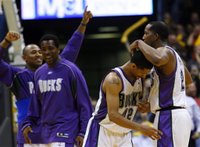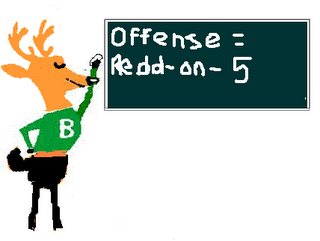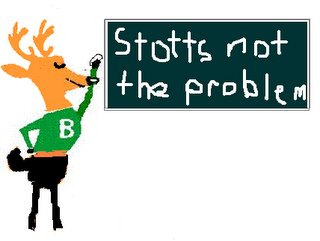
For most of the season the conventional wisdom in Bucks Nation has been that the Bucks roster is stocked with enough talent to make a serious playoff run. Therefore when things have gone wrong, as they have in the past couple of weeks, the fans -- via talk radio -- have turned on Coach Terri Stotts. Lately the talk has been particularly negative and vicious. But is it deserved? Could it be that Stotts has done a masterful job of making chicken salad out of chicken shit, and that the real blame for any shortcomings ought to fall in the lap of GM Larry Harris? I now think so.
This argument will be tough to sell I know. Stotts doesn't engender popularity under the best of circumstances. Look at the Coach Rating System (or whatever they call it) on Espn.com. Stotts score is way down in the low 30s while coaches with
worse records than him are up in the 70s. Its unbelievable. I presume Stotts is so unpopular because or his demeanor and because people think he's got a ton of talent to work with and he's fucking it up. I can't change the first, but people, the second reason is simply untrue.
Before I explain why let me say that up until probably Tuesday I would have sided wholeheartedly with the aforementioned wisdom. In fact, in this blog I loved to take
ad hominem shots at Terri Stotts. Well, I was wrong, wrong, wrong.
After doing an analysis of the career CGs of each of the main contributors on the Bucks roster, its clear that Harris gave Stotts precious little to work with. I will now go so far as to say Stotts has done a masterful job getting this team to 30 wins in only 61 games. They should be well below .500 yet Stotts has them in the playoff hunt. Its time he gets credit.
In order to vindicate Stotts I must tarnish Harris. Easy enough. Lets look at his offseason moves. First he gives a six year contract to a guy who has a career CG of 20.21. CG basically is a reflection of how good you are, how productive you are when on the court. It is a cumulation of your positive statistics (points, rebounds, assists, steals and blocks) minus your counterproductive statistics (missed field goals, missed free throws, and turnovers). That number is then divided by the number of minutes you played -- thus putting everyone on an even footing regardless of playing time. Finally, the number is multiplied by 48 for two reasons: 1) To show what the player would do over the course of the game, and 2) because it gives us a workable whole number instead of a fraction.
Anyway, a CG of 20 or below is poor, 20-25 is okay, 25-30 is very good, 30-35 is outstanding, and 35+ is Jordanesque. In order to contend, a team must have a plurality of players in the mid to upper 20s (the Pistons), or it must have at least two or three players in the 30s (the Spurs).
The Bucks starting lineup features two players in the teens (TJ Ford 17.9; Bobby Simmons 18.9) one in the low 20s (Magliore 20.11), and two in the mid-20s (Redd 23.7; Bogut 24.1). Moreover, none of them has even sniffed the upper 20s over the course of an entire season and all of their career CGs are mediocre at best (save Bogut who has not yet established himself). Simmons career CG is 20.4, or three full points below Chicago SF Luol Deng. TJ Ford's career CG is 19. I can't express how unacceptable that is. Consider that PG Jameer Nelson is posting a 23.3 this season. TJ Ford never reached 23.3
in college. Magliore's career CG is 24.2, not bad until you consider that Kent Benson's career CG was 25.6. Kent Benson. Finally, Michael Redd's career CG is almost exactly what his season CG is 23.9. That would be pretty good for a component piece, but Redd is supposedly the cornerstone of the franchise. (Redd's numbers are similar to Andrew Toney's. That should be the role Redd plays on this team. Instead we are asking him to be Dr. J) The cornerstone must, must, must have a CG of at least 29, and max contract guys ought to be up in the low 30s. Redd will never reach either of those levels.
Thus the belief that the Bucks "have the talent" is pure mythology. On most nights they are outgunned at 4 of the 5 starting positions. They are almost always woefully lacking at PG, SF, and C, and they rely on an out-of-place rookie at PF. The bench is not much better either. This is a play-off team? Not in terms of productive talent.
If Terri Stotts gets this unit to the play-offs he should be given the title of Basketball Shaman. The fact that he has kept them in contention for this long is really hard to believe.


